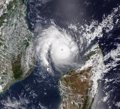May 19. (EUROPE PRESS) –
More than 50 percent of the world’s largest lakes are losing water, mainly due to a warming climate and unsustainable human consumption, according to a study published by ‘Science’.
But lead author Fangfang Yao, a visiting researcher at the University of Colorado Boulder’s Cooperative Institute for Research in Environmental Sciences (CIRES), in the United States, he says the news is not all grim.
With this new method of tracking lake water storage trends and the reasons behind them, scientists can give water managers and communities insights on how to better protect critical water sources and important regional ecosystems.
“This is the first comprehensive assessment of trends and causes of global variability in lake water storage based on a series of satellites and models,” says Yao. it’s a statement.
The environmental crises of some of the largest bodies of water on the planet, such as the drying up of the Aral Sea between Kazakhstan and Uzbekistan, motivated him to carry out this research.
So he and his colleagues from the University of Colorado at Boulder, Kansas State University, France, and Saudi Arabia created a technique to measure changes in water levels of almost 2,000 of the largest lakes and reservoirs in the worldwhich account for 95% of the Earth’s total lake water storage.
The team combined three decades of observations from a suite of satellites with models to quantify and attribute trends in lake storage globally.
Worldwide, freshwater lakes and reservoirs store 87% of the planet’s water, making them a valuable resource for both humans and terrestrial ecosystems. Unlike rivers, lakes are not well controlled, and yet they provide water to much of humanity, even more than rivers.
But despite their value, long-term trends and changes in water levels have been largely unknown – until now.
“We have quite a lot of information about iconic lakes like the Caspian Sea, the Aral Sea and the Salton Sea, but if we want to say anything on a global scale, we need reliable estimates of the levels and volume of the lakes,” explains Balaji Rajagopalan, a researcher at the CIRES, a professor of engineering at the University of California at Boulder and a co-author of the study–. With this novel method we can provide data on global lake level changes with a broader perspective.”
For the new work, the team used 250,000 lake area snapshots taken by satellites between 1992 and 2020 to study the surface of 1,972 of the largest lakes on Earth. They collected water levels from nine satellite altimeters and used long-term water levels to reduce any uncertainty.
For lakes without a long-term record of level, they used recent measurements of the water made by newer instruments on the satellites. Combining recent level measurements with longer-term surface measurements allowed scientists to reconstruct the volume of lakes from decades ago.
The researchers found staggering results, as 53% of the world’s lakes experienced a decline in water storage. The authors compare this loss to a magnitude 17 loss from Lake Meads, the largest reservoir in the United States.
To explain trends in natural lakes, the team took advantage of recent advances in climate and water use modelling. Climate change and human water consumption dominated the global net decline in the volume of natural lakes and water losses in some 100 large lakes, Yao explains.
“And many of the human and climate change traces in lake water losses were unknown until now, such as the drying up of Lake Good-e-Zareh in Afghanistan and Lake Mar Chiquita in Argentina,” he adds.
Lakes in the dry and wet areas of the world are losing volume. Losses in humid tropical lakes and arctic lakes indicate more widespread drying trends than previously believed.
Yao and his colleagues also evaluated storage trends in reservoirs. They found that almost two-thirds of the large reservoirs on Earth were experiencing significant water losses.
“Sedimentation dominated the overall decline in storage in existing reservoirs,” says Ben Livneh, also a co-author, CIRES member, and associate professor of engineering at the University of California, Boulder. In the oldest reservoirs -those that were filled before 1992- sedimentation was more important than droughts and years of torrential rains.
Although most of the world’s lakes are shrinking, 24% experienced significant increases in water storage. The lakes that grow tend to be in sparsely populated areas in the interior of the Tibetan Plateau and the northern Great Plains of North America and in areas with new reservoirs, such as the Yangtze, Mekong, and Nile river basins.
The authors estimate that about a quarter of the world’s population, 2 billion people, resides in the basin of a dried up lakewhich indicates the urgent need to incorporate human consumption, climate change and the effects of sedimentation to the sustainable management of water resources.
And their research offers clues to possible solutions, Livneh notes. “If human consumption is a major factor in declining lake water storage, then we can adapt and explore new policies to reduce large-scale decline“, Add.
This occurred in one of the lakes studied by the team, Lake Sevan, in Armenia. Lake Sevan has experienced an increase in water storage over the past 20 years, which the authors linked to the enforcement of water-withdrawal conservation laws since the early 2000s.










![[Img #74661]](https://thelatestnews.world/wp-content/uploads/2024/12/The-power-of-ultrasound-150x150.jpg)


![[Img #74661]](https://thelatestnews.world/wp-content/uploads/2024/12/The-power-of-ultrasound-300x200.jpg)
